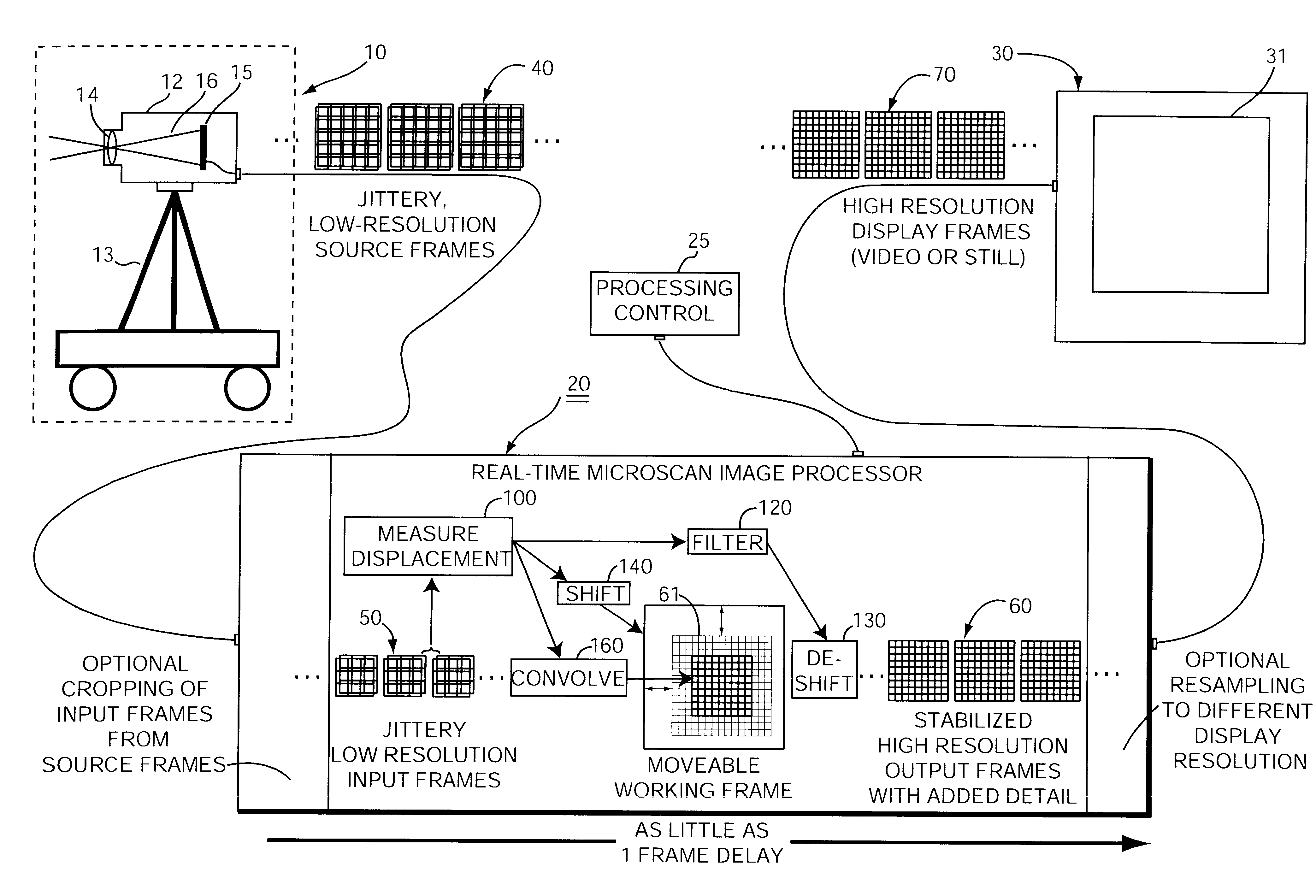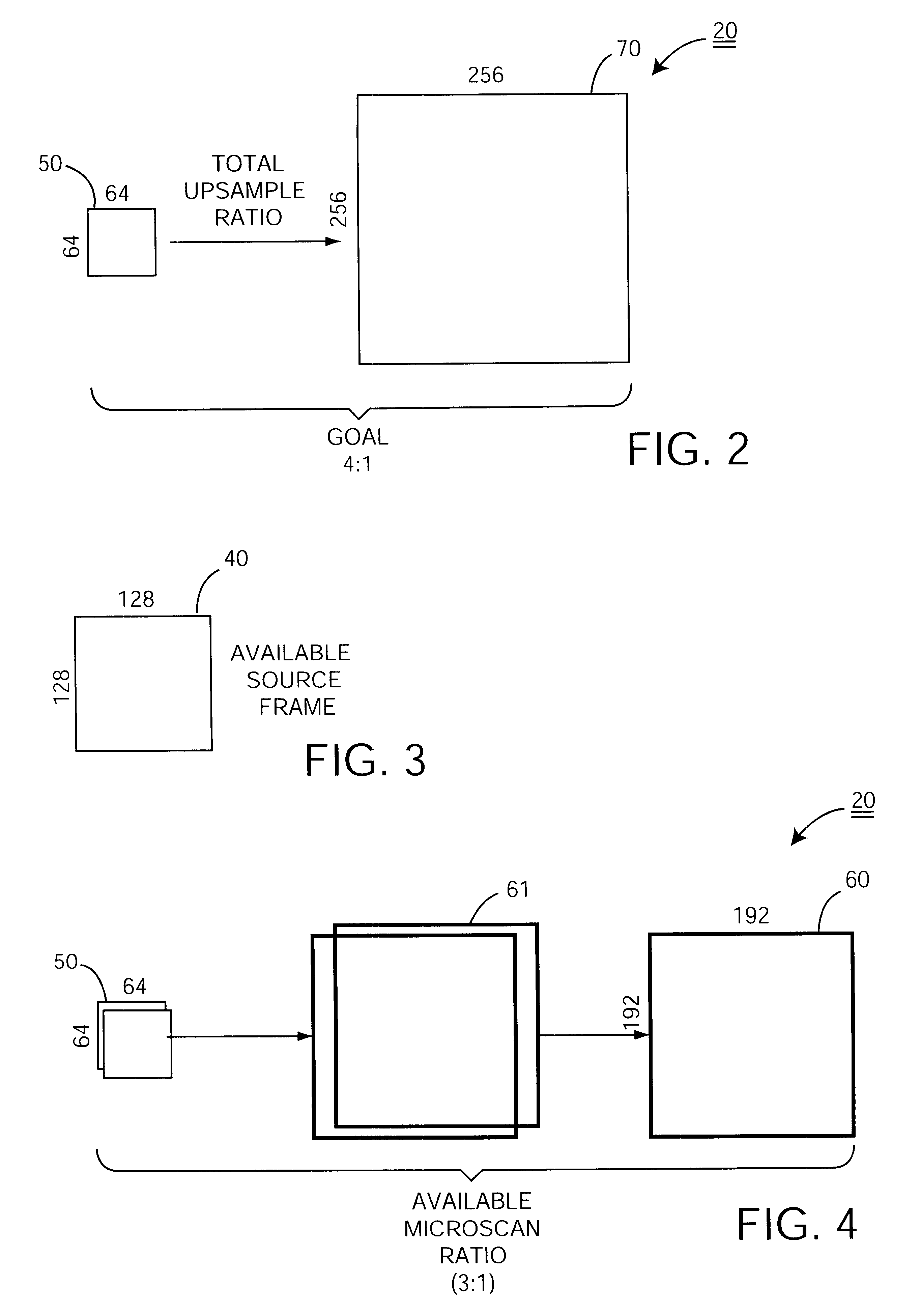Method of producing a high quality, high resolution image from a sequence of low quality, low resolution images that are undersampled and subject to jitter
a high-resolution image and sequence technology, applied in the field of digital image processing, can solve the problems of inability to identify suspects, difficulty in identifying suspects, and inability to capture images with high-resolution, so as to increase the quality and pixel count of frames, and improve the quality of image data. , the effect of simple and computationally efficien
- Summary
- Abstract
- Description
- Claims
- Application Information
AI Technical Summary
Benefits of technology
Problems solved by technology
Method used
Image
Examples
Embodiment Construction
FIGS. 2-12 are directed to the presently preferred embodiment 20 that runs on a general purpose computer. This embodiment reads low-resolution source frames 40 from a data file, processes them, and ultimately outputs high-resolution display frames 70 to a display device 30. The computer, of course, is governed by suitable software. This software for this particular embodiment was written in "C", but any suitable programming language may be used. A complete copy of the source code is attached hereto as an Appendix.
Overview of Operation
FIGS. 2-5 illustrate some developmental background that may be helpful in understanding certain idiosyncratic details of this embodiment.
FIGS. 5, 6, 7 and 8 offer conceptual views of how the preferred embodiment operates. Each one provides a successively more detailed abstraction of the preferred embodiment--progressing from the simple block diagram of FIG. 5, to the frame-centric version of FIG. 6, to the time-based diagram of FIG. 7, and finally to th...
PUM
 Login to View More
Login to View More Abstract
Description
Claims
Application Information
 Login to View More
Login to View More - R&D
- Intellectual Property
- Life Sciences
- Materials
- Tech Scout
- Unparalleled Data Quality
- Higher Quality Content
- 60% Fewer Hallucinations
Browse by: Latest US Patents, China's latest patents, Technical Efficacy Thesaurus, Application Domain, Technology Topic, Popular Technical Reports.
© 2025 PatSnap. All rights reserved.Legal|Privacy policy|Modern Slavery Act Transparency Statement|Sitemap|About US| Contact US: help@patsnap.com



